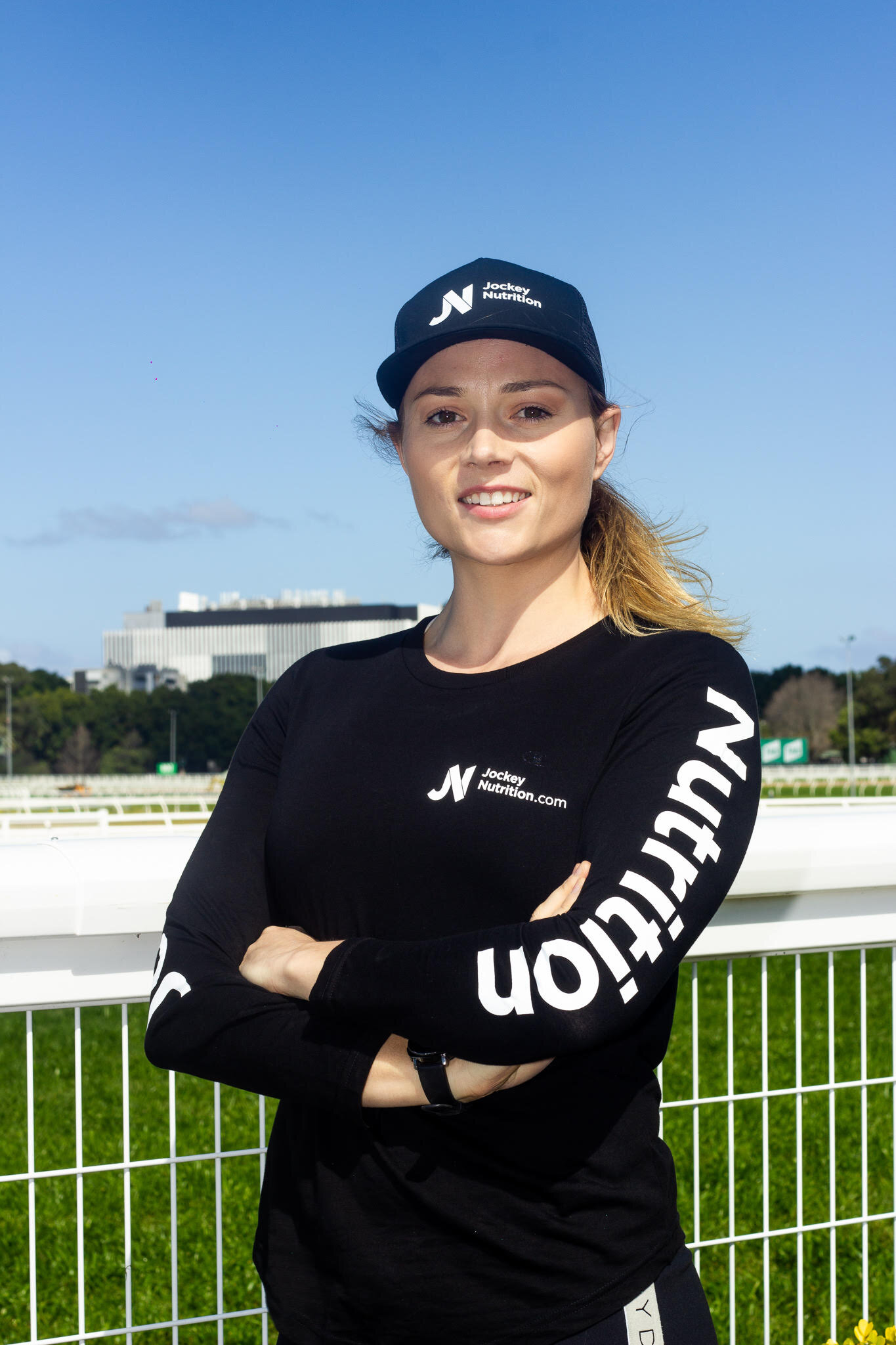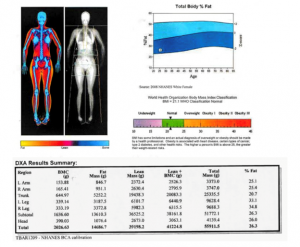by Meg Roberts (APD, Sports Dietitian)
In my experience as a Sports Dietitian for jockeys, a jockey’s weight management comes under three categories. Understanding which category you sit in, in my opinion, will help you to best manage your weight, mental and physical health and energy levels for performance. It is also important to understand that most jockeys do not walk around at correct weight, and this is perfectly normal. This is another reason I strongly encourage jockeys to advocate for themselves and ask not to be weighed on non-race days.
So what are the three categories?
Category I – Those that walk around at weight, naturally.
Category II – Those that do not walk around at weight but can manipulate glycogen and fluid stores to meet weight.
Category III – Those that will only meet weight by over exercising or developing an eating disorder as weight targets are physiologically impossible.

In reality most jockeys sit in category II or III. For those struggling with an eating disorder, making weight or you are not sure click the link or scan the QR code to the anonymous eating disorder screening tool via the Inside Out Institute; https://insideoutinstitute.org.au/assessment/?started=true . I also recommend speaking to your doctor or a dietitian. Racing NSW has a great initiative giving jockeys access to $300.00 per year to see a dietitian. If you need help put your hand up.
Weight management, where do we start? When it comes to weight management, regardless of which category you are, I always start by asking my athletes to complete a DEXA Body Composition Scan (Dual-Energy X-Ray Absorptiometry) and full bloods. Whether you are a pre-apprentice or a fully fledged professional jockey we need a baseline. DEXA scans give a thorough understanding of the athletes body composition, unlike your bathroom scales. As per the image and table below, the scan breaks down your fat, muscle and bone mass into grams. I start by looking at total mass (weight), fat mass and compare it to the jockey’s correct weight. Your correct weight may or may not be realistic based on your body composition and the DEXA scan helps us to decipher this. For many jockeys it gives them closure that it is ok to not walk around at weight, we then use other strategies to meet weight. This is why I strongly discourage jockeys, trainers, managers, and stewards from weighing jockeys on any other day than race day. It puts undue stress on jockeys and can trigger disordered eating/eating disorders. I’ve seen it time and time again. A prime example of a weight classed athlete not walking around at weight is Conor McGregor.
Table 1: DEXA Body Composition Scan: Cis-Female Apprentice Jockey
When looking at fat mass, each person requires a minimum amount of fat for health. For cis-women no less than 10kg and cis-men no less than 5kg. If we use the example above, this jockey weighs 55.9kg and a subtotal fat 13.6kg (total fat – weight of head). In theory this jockey could aim to lose 3.6kg of fat (subtotal fat – minimum fat required 10kg) and sit at 52.3kg. She needed to sit at 54kg, therefore her correct weight was a realistic target. If the goal were 50kg it would be unrealistic to walk around at this weight. We could use glycogen depletion and fluid manipulation.
Blood tests
The second task I ask jockeys to complete is to have their blood analysed. This is to ensure there are no nutritional deficiencies or abnormalities that need to be corrected. Deficiencies can lead to an array of things including difficulty with weight management, a lack of energy, poor sleep, fatigue, delayed recovery, and lethargy. For an athlete you want to be firing on all cylinders, so we need to check and correct. Due to the nature of racing and shift work, common deficiencies of jockeys include iron and vitamin D. See your doctor today and ask for the following blood work: serum chemistry, LFTs, FBC, EUCs, full iron study, Vitamin B12, Vitamin D, BSLs, Zinc, eGFR. For those consuming a restrictive diet of less than 1000 calories, have your doctor add thiamine, calcium, magnesium, and phosphate to your blood test.Once you have your results book an appointment with me to discuss if supplementation or only dietary changes are recommended.
Fuelling an athlete:
After looking at your DEXA scan and blood results, I look to improve the nutritional quality of your intake, both food and fluid, regardless of what category you are in. For those in category I, their weight may increase after improving their intake because they were essentially malnourished prior and/or dehydrated. Many of you would agree that a typical jockey diet is several coffees/tea per day, an energy drink and maybe one meal at night. How can you compete to your full potential if you aren’t fuelling yourself with nutritious foods.
We would start with the when, timing of meals, and then work on what, what you are eating. This will vary from jockey to jockey and which day of the week it is, race day vs trials. The final layer would be to add sports supplements to gain those extra one-percenters for improved performance. It is important to note sports supplements do not outweigh a poor-quality diet.
Manipulating glycogen and fluid to meet weight:
Now let’s jump to Category II jockeys, which would be most of you. This is because as a society we are getting taller, yet minimum weights are not increasing. This is unlikely to change soon, so we use the manipulation of fluid shifts and glycogen depletion to our advantage.
What is glycogen?
Your body breaks down carbohydrates into glucose which is stored in your liver and muscles as glycogen. By depleting your glycogen stores, you can decrease your fluid stores and subsequently body weight. As many of you have seen, those that go on a low carbohydrate diet will lose ‘weight’. This is temporary as it is fluid loss not fat or muscle loss. You will essentially gain the weight back once your glycogen stores are replenished. Below are two videos, one about glycogen and the other about energy systems in the body. I thoroughly recommend these to gain an understanding of the science.
Glycogen Video: https://youtu.be/q6cp4M5Pw8M
Energy Systems Video: https://youtu.be/dWe8vtztW-4
To manipulate glycogen use The Hill Sprint Protocol written by researchers from the Professional Jockeys Association and John Moore’s University, UK. Through this protocol you can lose between 0.45-1.4kg (2-3lbs) depending on the individual. Other exercises can be used if you can’t sprint; an exercise bike or HIIT/circuit training. Have a try and see how you go. If you have significantly restricted your diet already, your glycogen stores may already be depleted. Use this protocol the day prior to race day and practice it first to see if it works for you and how much weight on average you can drop.


To ensure you know the sources of carbohydrates:
Carbohydrates come from wholegrains, breads and cereals, fruit, fruit juice (fructose), starchy or root vegetables, legumes and lentils, milk and yoghurt (lactose). They are also found as simple sugars in sugar, pastries, sweets, lollies, and soft drinks. You want to limit eating these after the Hill Sprint Protocol and consume a meal high in protein, low carb vegetables/salad and fats (i.e., olive oil, nuts, seeds, avocado). After the races, as you no longer must meet weight, top up your carbohydrates to help with recovery. An easy option will be flavoured milk and a Gatorade, then after getting changed a sandwich or wrap with chicken/turkey/ham with ++ salad.
Fluid manipulation:
In addition to depleting glycogen, you can look to strip body fluid. This can be through fluid restriction and active or passive sweating. It is important to note that dehydration does impact performance however for some this is the only option to meet weight. Some may opt for active sweating in the form of sweat suits during track work, running or cardio exercise or passive sweating in baths, saunas or steam rooms. You may also restrict fluid intake for the day prior to the races. To effectively rehydrate post races, record your weight pre and post sweat to calculate the fluid lost. Then multiply this by 1.5. This will calculate the litres required to rehydrate. For example, if you lost 1kg or 1L, top up with 1.5L of fluid. As your sweat is water and salt, it is important to top up electrolytes also. This can be in the form of sports drinks (Gatorade/Powerade) or Hydralyte tablets or icy poles. An example would be to consume a small flavoured milk post races (250mL) + Gatorade (600mL) and 650mL water, consumed over 1-2 hours post races = 1.5 Litres.
Those that are in category III or anyone using extreme weigh making techniques including eating one meal per day please seek help from your doctor or dietitian. Begin by completing the above questionnaire with The Inside Out Institute.
SUPPLEMENT RECOMMENDATION
We did not touch upon supplements today, however if you are looking for safe supplements try True Protein. They are third party tested for banned substances to ensure they are safe for athletes to use. We have been extremely lucky and True Protein has given us a discount code: JOCKEY
For orders over $100.00 you get $25.00 off by using JOCKEY. Go to trueprotein.com.au today!
I hope you enjoyed the above article. For more information or to purchase my 92-page weight making e-book, go to jockeynutrition.com.au
Meg Roberts





